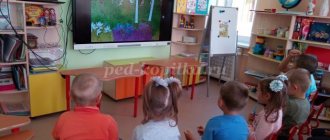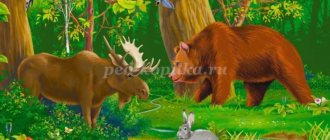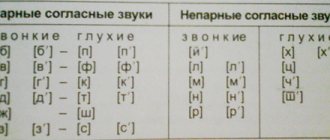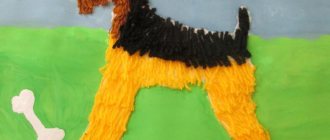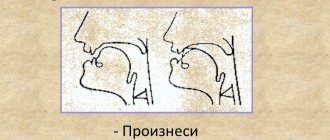LiveInternetLiveInternet
Quote from Tatyana57
Read in full In your quotation book or community!
SPEECH DEVELOPMENT. LEXICAL TOPIC “WILD BEASTS OF OUR FORESTS AND THEIR CHILDREN”
CHILDREN SHOULD KNOW THE NOUNS: bear, she-bear, bear cub, wolf, she-wolf, cub, hare, hare, little hare, fox, fox, fox, fox, hole, lair, squirrel, squirrel, hollow, moose, elk, calf, horns, hedgehog , hedgehog, hedgehog, wild boar, female boar, boar, badger, badger, little badger, forest, clearing, cheat, paw, wool, claws, nose, ears, hooves, tail. Muzzle, snout, mouth, animals, cubs, bushes, trees, mouse, lynx, raccoon, beaver, deer, marten, fangs, sable, mink, mole, den, connecting rod. ADJECTIVES: brown, clubfooted, cunning, predatory, gray, tireless, scary, thick (fur), red, wild, fluffy, dexterous, careful, fast, white, cowardly, long-eared, lop-eared, sensitive (ears), oblique, timid, velvet, prickly, wolf, striped. VERBS: wanders, climbs, roars, tears (bast), jumps, gallops, growls, grins. Hunts, escapes, howls, gnaws, digs, runs, “gave a go,” collects, stores, grunts, sniffs, sniffs, listens, hides, pricks, sneaks, sucks, lies down, falls. CHILDREN SHOULD BE ABLE TO NAME THE FAMILY: Bear, she-bear, little bear. Hare, hare, little bunny... SELECT NOUNS TO ADJECTIVES: Brown, club-footed, clumsy -... Gray, toothy, scary -... Cunning, fluffy, red-haired -... CALL MOM: The bear's cub, the fox's cub..., the bunny's... WHO HAS A VOICE : The fox yelps, the bear growls, the wolf howls... WHO LIVES WHERE: A fox lives in a hole. In the den - ... In the den - ... In the hollow - ... TO WHOM WE WILL GIVE WHAT: Meat - to the wolf, raspberries - ..., honey - ..., carrots - ..., nuts - ... SELECT NOUNS TO THE VERB: Hunts - ... Sneaks - ... Howls - ... Bites - ... Jumps - ... Tricks - ... Waddles - ... SELECT SIGNS: Wolf (which one?) -.... Fox (what?) - ... Hedgehog (what?) - ... SELECT ACTIONS: Bear (what is he doing?) - ... Fox (what is he doing?) - ... Hare (what is he doing?) - ... CORRECTLY ANSWERING THE QUESTIONS: Whose? WHOSE? WHOSE? WHOSE? Track - wolf, fox, hare... Ears - bear, hare, squirrel... Head - elk, hedgehog, wolf, fox... FORM NEW WORDS USING PRESIDENTS: Walks - moves, leaves, goes around, passes, enters, enters, descends, finds , leaves, approaches, reaches, comes, leaves, passes. COMPLETE A DESCRIPTIVE STORY ACCORDING TO PLAN. What is the name of? Where does he live? What kind of home does he have? What is the appearance? What habits? What does it eat? How does it get food? What are his enemies? How to defend yourself? What is the cub's name?
The fox is a predator. The fox mainly hunts mice, gophers, and less often hares. The fox cunningly catches hedgehogs. She rolls the hedgehog to the water, he straightens his spines in the water and swims to the shore. This is where the fox is waiting for him. The fox lives in a hole, and in the spring the fox gives birth to cubs. The squirrel is a rodent. She eats nuts, berries, mushrooms, and pine cones. The squirrel has sharp claws. This helps her quickly climb the tree. The fluffy tail serves as a parachute for the squirrel. A squirrel lives in a hollow and insulates its nest with down. In summer the squirrel is red, and in winter it is gray. In winter, the squirrel sleeps almost all the time and rarely looks out of the hollow. The squirrel is a thrifty housewife. She prepares nuts for the winter and dries mushrooms on tree branches. In the spring, squirrels give birth to squirrels. The wolf is a predatory animal. Wolves live in a pack. A pack is a wolf family. Wolves almost always hunt for sick, weak animals. Wolves hunt at night. Wolves live in a den to raise wolf cubs; wolf cubs appear in the spring. The bear is an omnivore. He loves to eat honey, berries, fish, ants, roots, but can also attack humans. The bear is clumsy in appearance, but easily climbs trees and runs quickly. The bear builds a den for himself from twigs, fallen trees, and moss. In winter, a mother bear gives birth to cubs. If a bear has accumulated little fat since the fall, it wakes up in the winter and walks through the forest hungry. For this the bear was nicknamed the connecting rod. The hare is a rodent. The hare feeds on grass, leaves, shrub bark, mushrooms, and roots. In winter, it chews the bark of trees. The hare is white in winter and gray in summer. This helps him hide from predators. Long, fast legs also save the hare from its enemies. The hare runs up the mountain at a run, and down the mountain somersaults. The hare lives under a bush in the summer, and digs a hole in the snow in the winter. In the spring, the hare gives birth to baby hares.
EXERCISE “GUESS AND TELL”. This beast lives in the forest, gnaws the bark of the trunks. In the summer in a gray fur coat, and in the winter in a white one. (Hare) - What does the hare eat in the spring? (grass, leaves). The owner of the forest wakes up in the spring, and in winter, to the howl of a blizzard, he sleeps in a snowy hut. (Bear) -What does a bear eat? (roots, grass, beetles, mice, hares). You and I recognize the animal by these two signs: He wears a gray fur coat in the winter, and a red fur coat in the summer. (Squirrel) - What does a squirrel feed on? (cones, nuts). All winter between the Christmas trees I slept through a bag of needles. “F-f-f-f—stop sleeping, It’s time to get up!” (Hedgehog) - What does a hedgehog eat? (bugs, worms, mice). Gray and toothy. Howls on a rainy day: “Uh-uh...” (Wolf) - What food does a wolf eat? (meat - catches mice, hares, sheep). Fluffy tail, golden fur, lives in the forest, steals chickens in the village. (Fox) - Who else does the fox catch? (mice, hares).
Wild animals of the forest
Hare
The hare lives in the forest. He does not dig holes for himself, but hides in bushes, in recesses under roots, under branches, where he builds a winter hut for himself. The hare's main food is grass, hay, and young tree branches. The hare also eats vegetables, fruits and berries, if he can find them.
Fox
The fox is a wild animal. She lives in the forest, in a hole. The fox is a predatory animal. The main food of foxes is insects (beetles, earthworms) and small rodents (voles). If the fox manages to catch a hare or a bird, which does not happen very often, she will happily eat them too. Often foxes settle next to humans and steal poultry from poultry houses. Sometimes she can also feast on fish washed up on the shore. She will not disdain berries and fruits when she is hungry.
Wolf
The wolf is an animal of the forest. Wolves live in a den. Wolves hunt in packs, so they are able to catch large prey: elk, deer. The wolf will gladly treat himself to both the bird and the bunny. In hungry years, wolves can attack livestock, but this happens very rarely. Wolves are very cautious and afraid of humans.
Hedgehog
Hedgehogs live in the forest. They rarely dig holes themselves, more often they occupy someone else’s or build a nest among protruding roots, under a bush, in depressions in the ground, dragging there a lot of leaves, dry grass and moss. In winter, hedgehogs hibernate. Hedgehogs eat mainly insects. If they come across a snake, they might eat it too. Don't mind eating mushrooms, acorns, berries and fruits.
Brown bear
The brown bear is a wild animal of the forest. For the winter, the bear builds a den for itself and hibernates. The main food of bears is berries, roots, and mushrooms. If a bear finds a bird's nest, it will feast on eggs; if it finds a hive of wild bees, it will eat honey. The bear knows how to catch fish and eats it with pleasure. He can even eat a mouse if he manages to catch it. He will not disdain carrion either.
Squirrel
A squirrel lives in the forest. She finds a hollow in a tree and settles there. The squirrel eats berries, fruits, mushrooms, nuts, acorns and grains. Stores supplies for the winter, hiding them under roots or among tree branches so as not to starve in winter.
Lexical topic “Wild animals”methodological development for speech development (preparatory group)
Lexical topic “Wild animals”
- Children need to learn: the names of animals (hare, squirrel, wolf, bear, hedgehog, beaver, elk, wolf, fox, lynx) and their cubs, why they are called wild. What animals hibernate? What happens to the hare and squirrel in winter? (they change their coat: a bunny from gray to white, a red squirrel to gray and why?). Be able to distinguish appearance, what parts their body consists of; where they live, what they eat, which of them are herbivorous, which are carnivorous, which are omnivorous.
- The use of nouns with the suffixes “- onok, - yonok” “What is the name of the cub?”
Look at the picture and name the cubs. Who is the bear? - teddy bear...etc.
(at the boar's house...,
from a fox..., from a she-wolf..., from a lynx..., from a moose cow..., from a hedgehog..., from a squirrel..., from a beaver..., from a hare...?)
- Consolidating the names of the cubs + logical thinking + instrumental case of nouns “Who was who?” The bear was...a bear cub...(squirrel, hedgehog, wolf, fox, elk, badger, mouse, mole, beaver, wild boar, hare)
- “Name the body parts of animals”
A person has a face, but an animal?___ A person has a mouth, and an animal? ___
A person has teeth, but an animal? ___ A person has legs, and an animal has ___
A person has nails, but an animal? ___ A person has hair, but does an animal have hair?___
- Agreement of feminine and masculine nouns with nouns “Help Misha and Masha count the animals in the forest” Example “One wolf, two wolves, three wolves, three wolves, five wolves”….(one fox…, one squirrel…, one hare…, one hedgehog...)
- Use of prepositions “IN, ON, UNDER” “Who will spend the winter where?”
Example: “The squirrel will spend the winter in a hollow…” - answer in a complete sentence!
(squirrel in a hollow, lynx in a den, fox in a hole, bear in a den, hedgehog in a hole, badger in a hole, wolf in a den)
8. Development of visual perception, fine motor skills and coherent speech.
1.Look carefully at what animals you see here
2. Come up with a riddle about any animal according to the diagram
3. Riddle this riddle to your mother, she will guess the path
4.Color only this animal
- Development of logical thinking “The Fourth Wheel”
Find one extra picture in each row, cross it out, explain why it is extra
- Formation of possessive adjectives “Find the tail”
Find the tail of each animal and name whose tail it is.
Example: “The tail of a hare is hare...” (squirrel, wolf, fox)
Now name it: whose face (ears, paws, eyes, nose, claws) does the wolf have? (squirrels, hare) Find the shadow of each animal, connect it, tell me whose shadow it is? (squirrel…..)
- The use of the dative and instrumental case of nouns “Gift of Santa Claus”
Guess and name what Santa Claus prepared and for whom. Example: “Meat for the wolf”…. honey - ..., carrots - ..., nuts - ..., acorns - ..., fish - ..., apple - ....
Then ask again what he treated the wolf with?...meat (bear, hedgehog, hare, wild boar, squirrel, fox)
